How to Read Pc Files on Mac
Want to use NTFS drives on a Mac? In this guide we evidence you how to use those Windows-formatted drives in macOS.
The Mac versus PC fence isn't going to be settled anytime soon simply there'due south no denying that Windows computers are more than widespread. For this reason, many manufacturers of external difficult drives and USB sticks pre-format their devices to NTFS.
This format was created for Microsoft and allows users to apace plug their drives into Windows machines and work with files. As NTFS is proprietary, Apple tree would need a special license to employ information technology fully on the Macs they sell.
Instead of doing this, macOS has been designed to read NTFS-formatted drives but not write to them. In other words, as a Mac user you can merely open and view files on Windows drives: y'all can't change them in anyway, nor can you copy new files to NTFS format disks.
In this guide, you'll detect several solutions to this dilemma from formatting drives to a more universal file organization to using third-party tools.
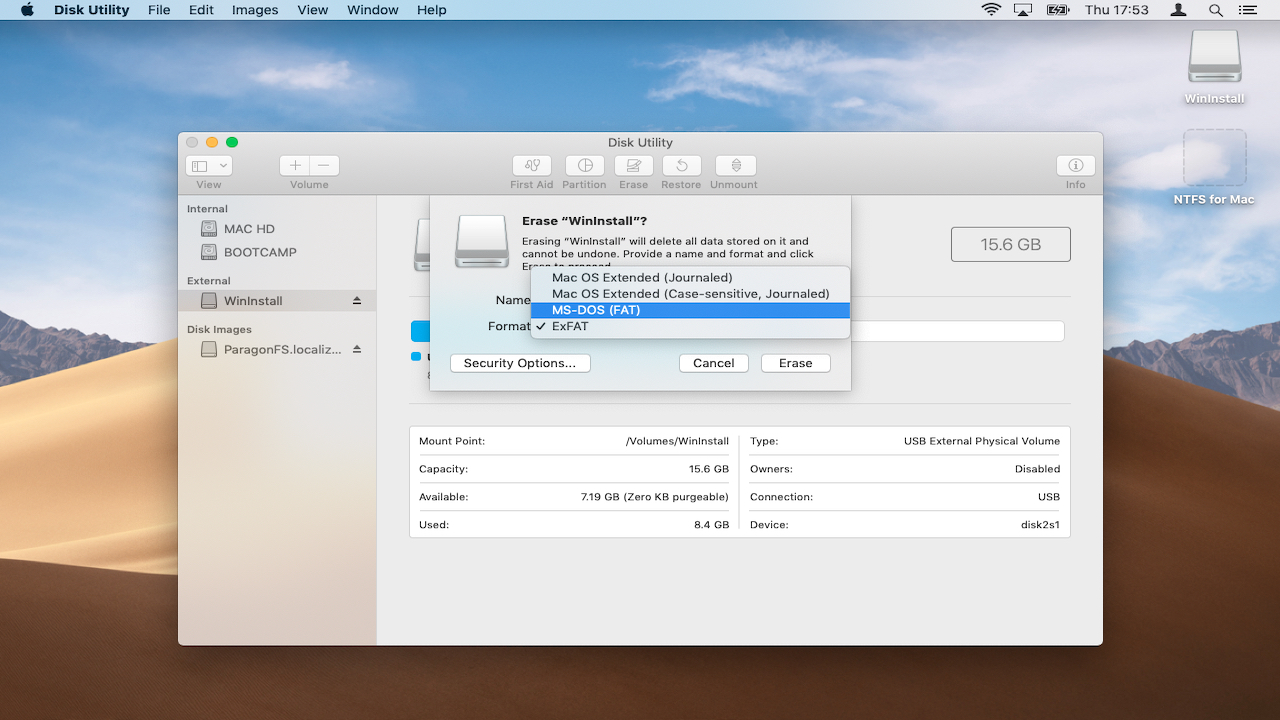
1. Format to FAT32
If you lot have an NTFS drive y'all tin use macOS' Disk Utility to reformat it to FAT32. This is simple to exercise and means the data on your bulldoze/USB stick can be read and written on both Macs and PCs.
Exist aware that the FAT32 format isn't as efficient as NTFS: it only supports files sizes of upwardly to 4GB. This may pose a problem if you're using the drive to shop loftier-quality videos. More data on FAT32 versus NTFS is available from Microsoft Support.
To get started, click the Spotlight icon at the top right of your screen and enter 'Disk' to launch Disk Utility. Insert your NTFS bulldoze or USB stick and click to highlight the disk proper name in the white box on the left-paw side of the window.
Select the 'Erase' tab. Under 'Format' choose '(MS-DOS Fatty)'. Enter a new name for the drive in the field above if yous wish.
Click 'Erase' to proceed. Read the warning carefully earlier proceeding, as this process will delete whatsoever existing data on the bulldoze. From now on you lot'll exist able to motility files to your bulldoze and edit them in identify from a Mac or PC.
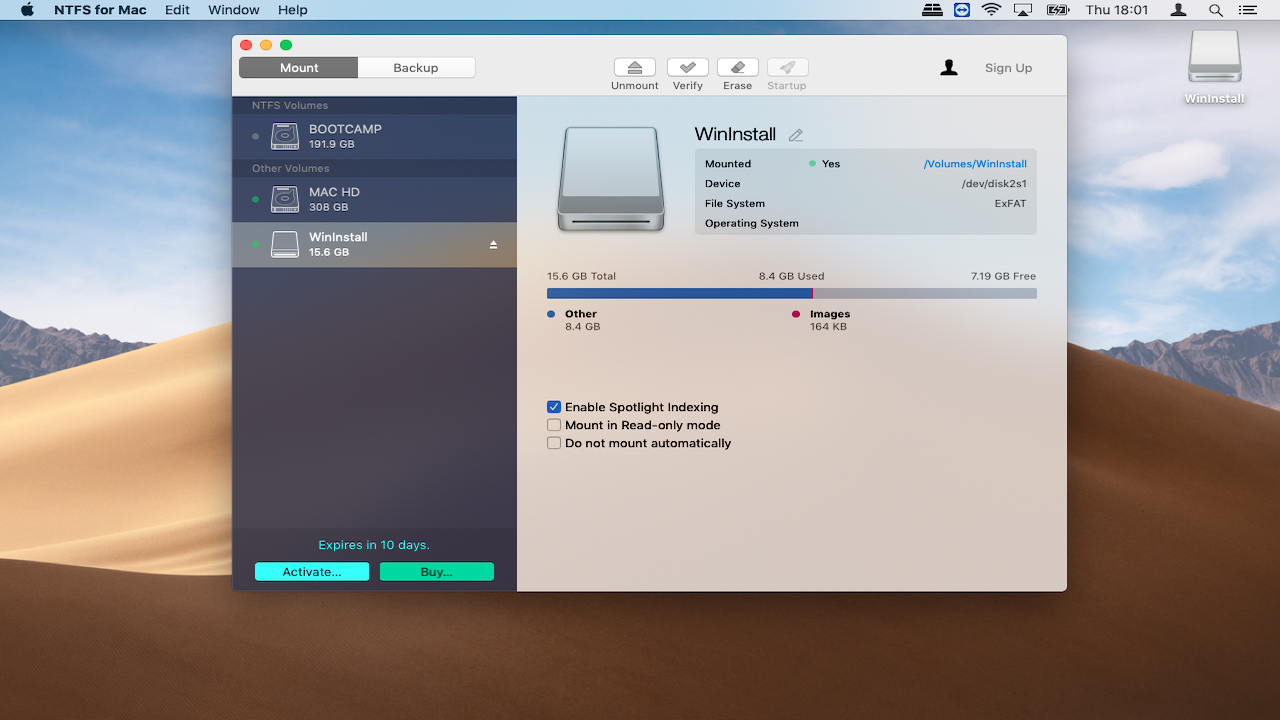
2. Use a 3rd-party app
The fact that macOS doesn't support Windows NTFS drives out of the box has led to the development of a number of 3rd-political party apps, which are licensed to both read and write to Windows disks.
These can be particularly helpful if you regularly have to plug your drive into both a Mac and PC both use file sizes larger than that supported by the more universal FAT32 format.
One of the strongest contenders for macOS is Microsoft NTFS for Mac by Paragon, which offers a ten-twenty-four hours free trial of its features. Once installed, the app will mountain your Windows drives allowing you to change or remove files to your hearts content.
At the time of writing there doesn't seem to be any freeware macOS programs offering NTFS write back up, which may put off users on a budget.
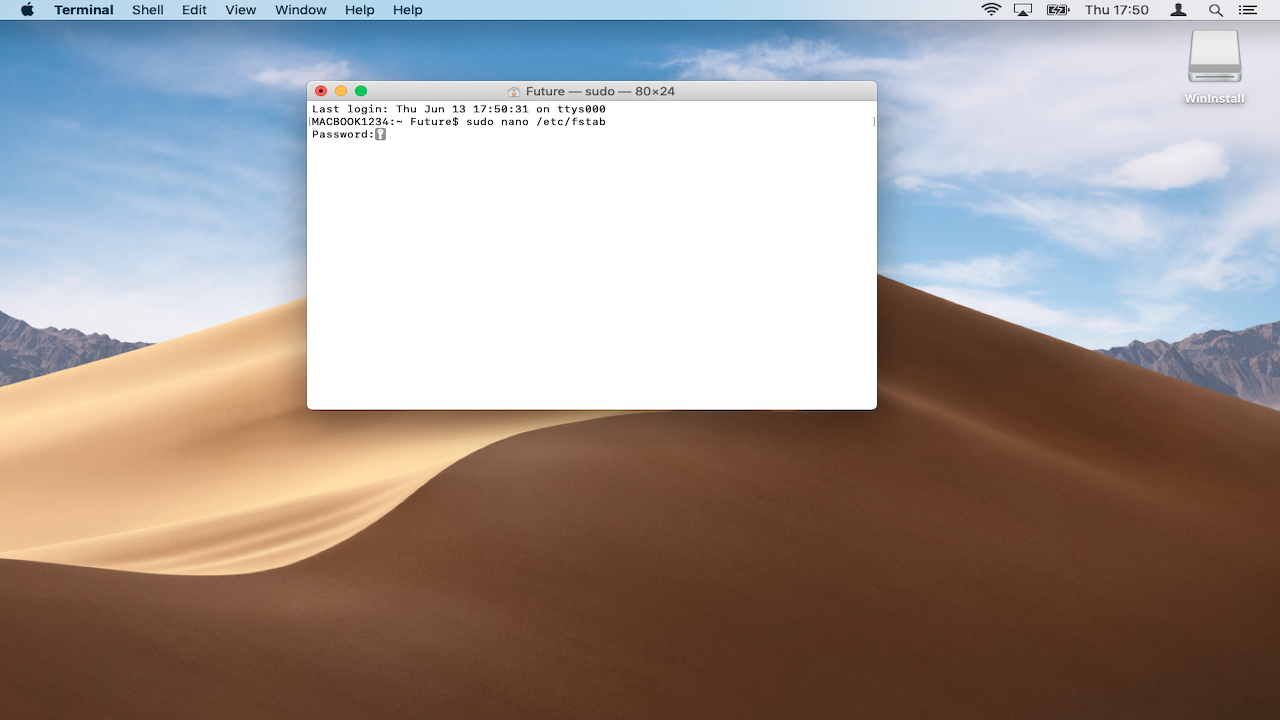
3. Enable NTFS write support in Terminal
If reformatting your NTFS drive for Mac is not an option, you can enable write back up for specific Windows disks using macOS Terminal. This is an experimental feature and could lead to data loss, so make sure to do a full fill-in of both your Mac and any data on the bulldoze before continuing.
The main benefit of using Terminal in this manner is that information technology's quick to practise and no 3rd-party software is required. As this feature is all the same in the testing phase however, your files could get corrupted at anytime, so proceed with caution.
To go started, click the Spotlight icon at the height right of your screen and enter 'Terminal'. Connect your NTFS bulldoze, then enter the command:
sudo nano /etc/fstab This volition open the list of drives recognised by macOS. Use the arrow keys on your keyboard to scroll to the very cease and add the following line, replacing 'Name' with the actual name of your NTFS drive due east.k. USB1 (if you're unsure what this is, simply open Disk Utility):
Label=NAME none ntfs rw,machine,nobrowse Printing Ctrl+O to save the list, and and then press Ctrl+X to get out NANO. Next, connect your Windows drive to the Mac.
Open Finder, then click Go'> Go to Folder, then type '/Volumes/Proper name' where 'Name' is the name of your NTFS drive.
Click 'Get' to access your Windows disk. You lot should now be able to edit existing files and copy new ones here.
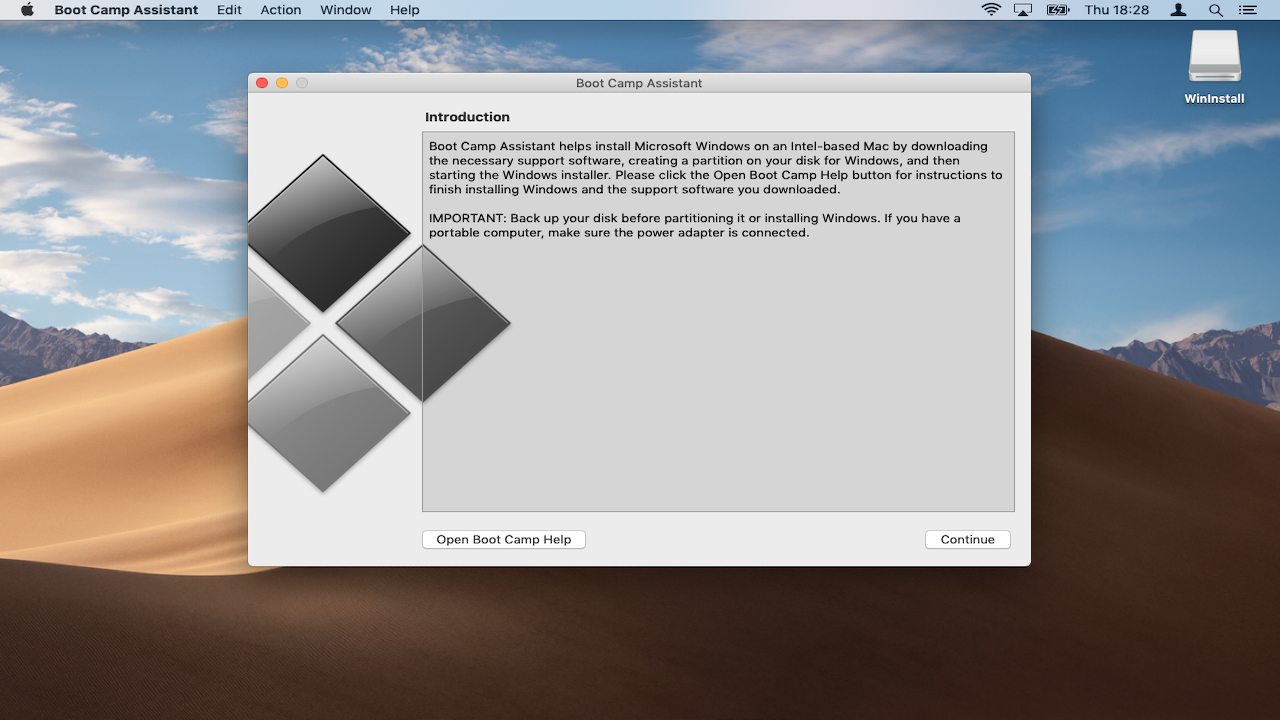
4. Use BootCamp
Bootcamp is macOS' own congenital-in utility for installing Microsoft Windows on your Mac. The most recent version of macOS (Mojave) supports Windows 10. During the setup procedure, users shrink the size of their existing macOS installation to make room for Windows.
This allows you to kicking both operating systems on your Mac. Once set, Windows 10 will function on your Mac in just the same mode equally it would on a regular PC. This includes working with NTFS-formatted drives.
To get started, all you need is an internet connection, a valid Windows 10 DVD and a USB stick of at least 8GB. See our guide on setting up BootCamp for more details on how to become started.
Although BootCamp is easy to prepare and employ, yous must buy a Windows 10 license to continue using the Bone afterwards 90 days. Yous'll besides naturally will have to work with files using Microsoft apps instead of those designed for Mac like iMovie.
If you lot enjoy using the iWorks app however (Pages, Keynotes & Numbers), you tin can work with the online versions of these tools on a PC by accessing iCloud via your browser.
When using BootCamp remember that any files you save to the Windows 10 section of the difficult disk itself can't be accessed when y'all reboot into macOS and vice versa.
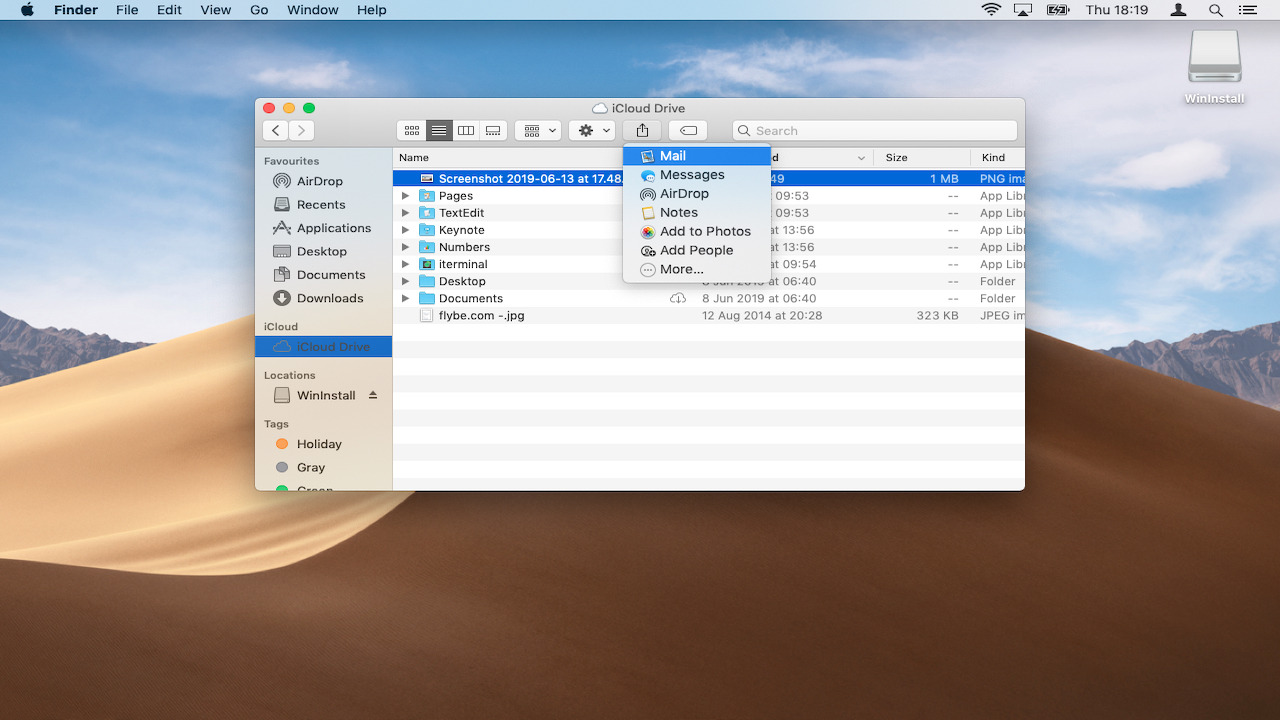
5. Movement to the Deject
If yous only want to work or collaborate on a few files, why non ditch the drives altogether and place your files in the Cloud?
Online services such equally iCloud Bulldoze offering a generous free assart (5GB) and allow you to immediately sync, edit and share files even if they were originally created for Windows and saved to an NTFS disk.
To take reward of iCloud, merely open your Windows drive in Finder and then re-create and paste any files you want to work with to the location 'iCloud Drive'. If yous don't see this is the side pane, open System Preferences > iCloud to check yous're signed in and that this service is enabled.
The Mac operating system volition automatically sync the files to Apple's servers. Once you've opened the files and made any changes you demand, you can send a sharing link to others if you wish.
To do this, right-click on any file, then hover your mouse over 'Share'. From here you can choose diverse methods to send your sharing link e.g. via 'Mail'.
- The fifty best Mac tips, tricks and timesavers
longoriabutia1939.blogspot.com
Source: https://www.techradar.com/how-to/how-to-use-ntfs-drives-on-a-mac
0 Response to "How to Read Pc Files on Mac"
Publicar un comentario